Collectible Minifigure Series have been released by LEGO for many years and have shaped a lot about what LEGO thinks their consumers, specifically LEGO collectors, want. But in many ways, it is important that LEGO presents a series of minifigures that represent equality and inclusion. Historically, LEGO has released a series that is a majority male minifigs and really leans into stereotypical gender roles, but 2020, marks an important year as the first year where the CMF series has an equal number of women and men.
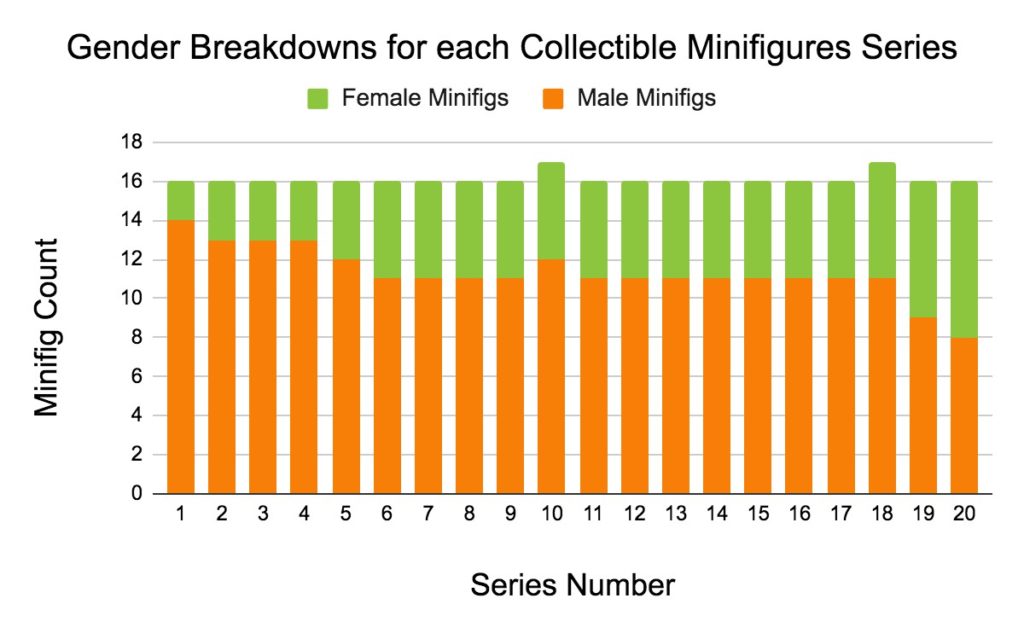
This statement that there are more male than female minifigs is true for the IP CMF series as well. Depending on the targeted audience and the specific theme of the series, the gender ratio is weighted differently, but in general, the trend is that there are more men than women in these series. This of course is also probably due to a larger problem in the world of entertainment, where there is typically not as many women protagonists and women main characters than men in many movies and stories.
Even still, it is possible to make a more gender balanced series out of many of these popular stories. There is even the German Football Association (Deutscher Fußball-Bund) series that has no female characters at all. In the Olympic CMF series Team Great Britain, the characters are not based on real life athletes and therefore could have been created whatever gender, and even still, the series was not a 50/50 male female split. In addition, the LEGO Movie 1 CMF series and the LEGO Movie 2 CMF series stem from characters and storylines that LEGO themself created. By being LEGO movies, LEGO had the opportunity to create from scratch an inclusive plot with a gender balanced cast of interesting characters and yet they did not. By not doing this, they not only created a movie with this gender balance problem, but also merchandise and by extension these CMFs with the same problem.
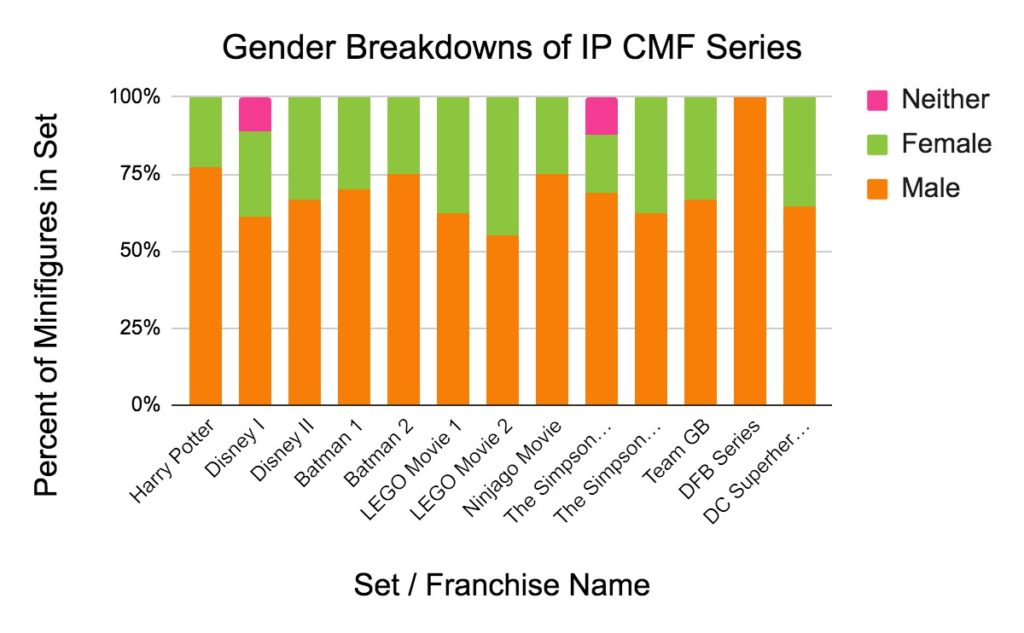
Not only is gender breakdown unequal, but the roles that the minifigs take are unequal. This is shown in both the types of roles that the minifigs play and also the types of accessories the minifigs are holding. To look at this, we created character categories that expressed either the occupation, interests, or role of each CMF and then sorted all CMFs in series 1-20 into these categories. These character categories are based on the most apparent aspect of the minifigure character, such as a fighter who is clearly holding a weapon. But there are also some categories that are time period based such as historical figures and there are some based on profession, which are split into athlete, entertainer, professional, and STEM worker. Categories like object costume, animal costume, and mythical figure were clearly needed due to the high number of CMFs in these categories. Family and street kids are categories where the CMFs are either doing hobbies or are being a clear family member.
When one looks at the CMFs’ characters, the most popular roles for the male minifigs are fighter, professional, and entertainment and the female minifigs are fantasy, professional, and entertainment. This brings up a whole new question not only about the number of women being represented in CMFs, but also how women are represented in CMFs.
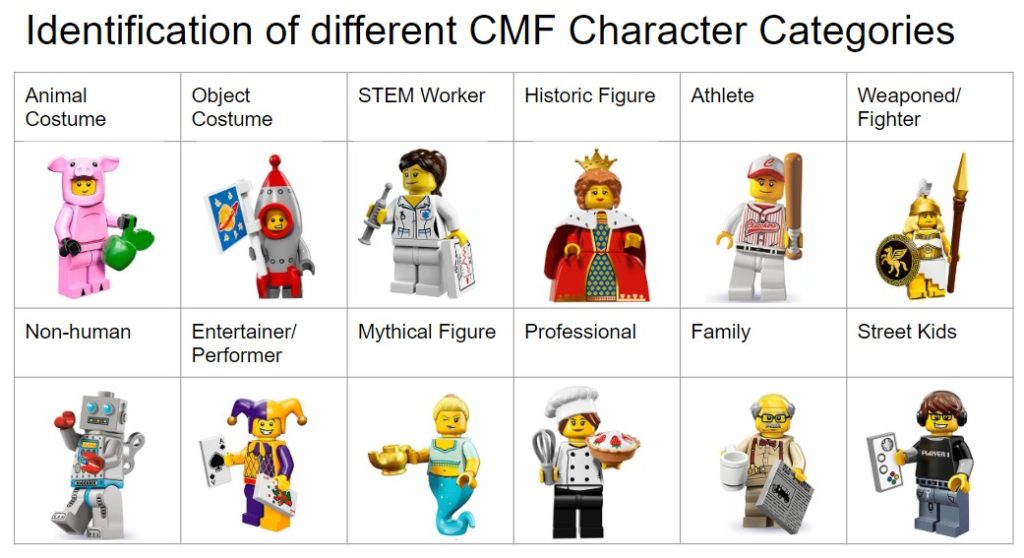

The good news is that although LEGO cannot change the past CMF series to be more inclusive, it is clear from recent series that they are getting the message that equality and inclusion is important. CMF series 20 is the first series with an equal number of female and male minifigs. In addition, for series 19 and series 20, they feature a large number of women in STEM fields, a rocket scientist and a computer programmer, and none of the women in these series are heavily feminized. However, there is still a very unequal number of female and male IP CMFs and there is no evidence of an upward trend happening in that department. We see evidence of the tides turning, which is great news for the future CMF series to come, but if only we could make the same change with the IP CMF series.
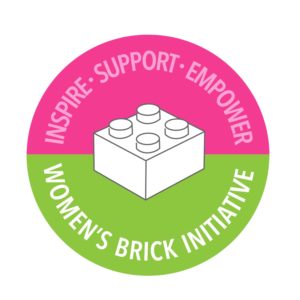
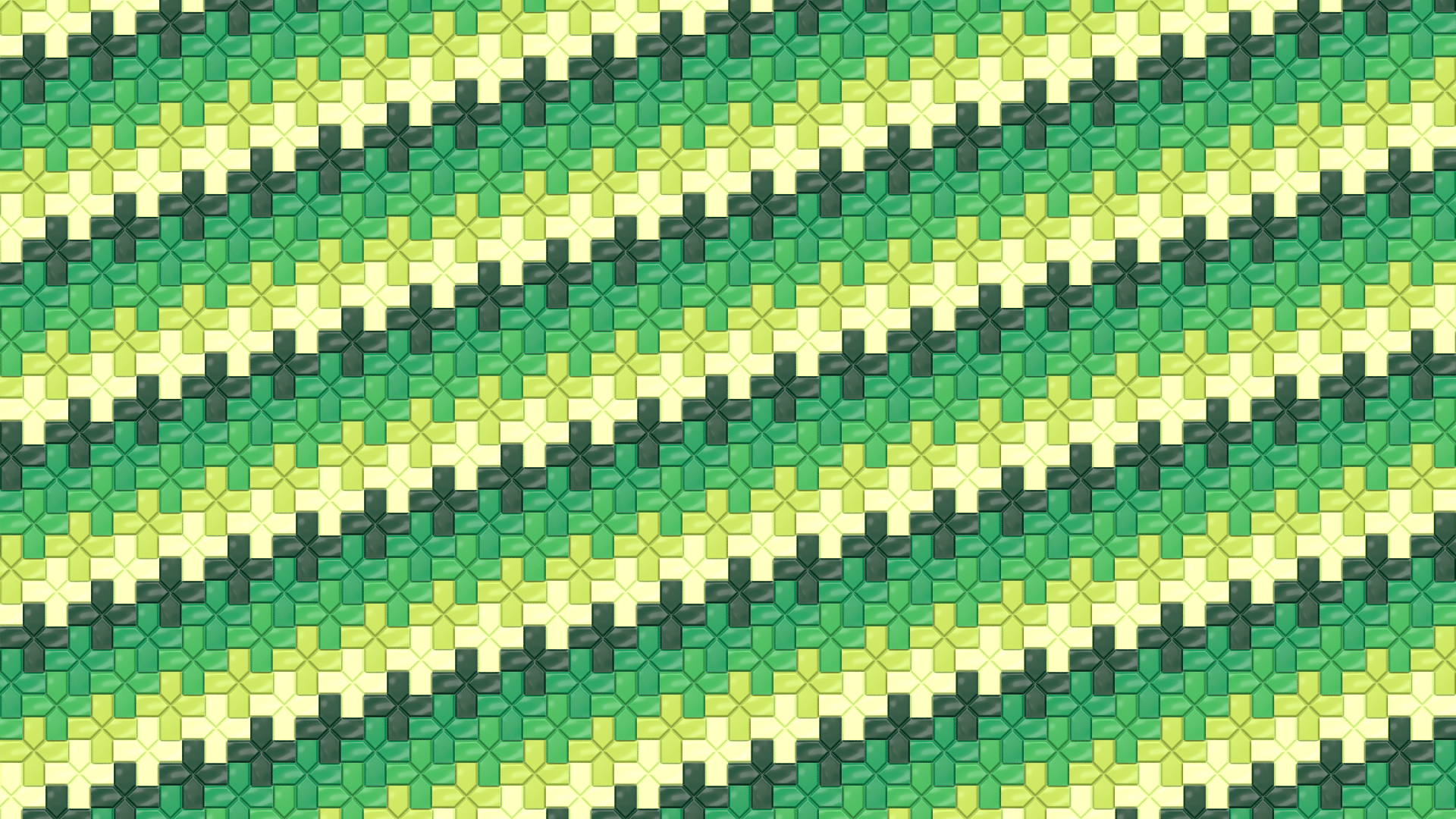
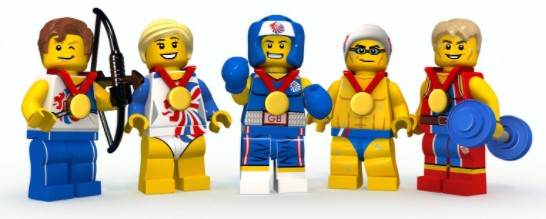
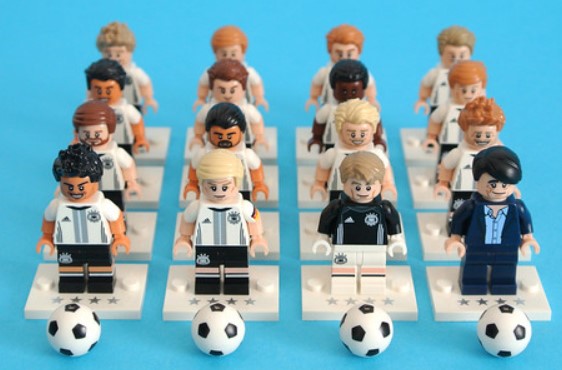
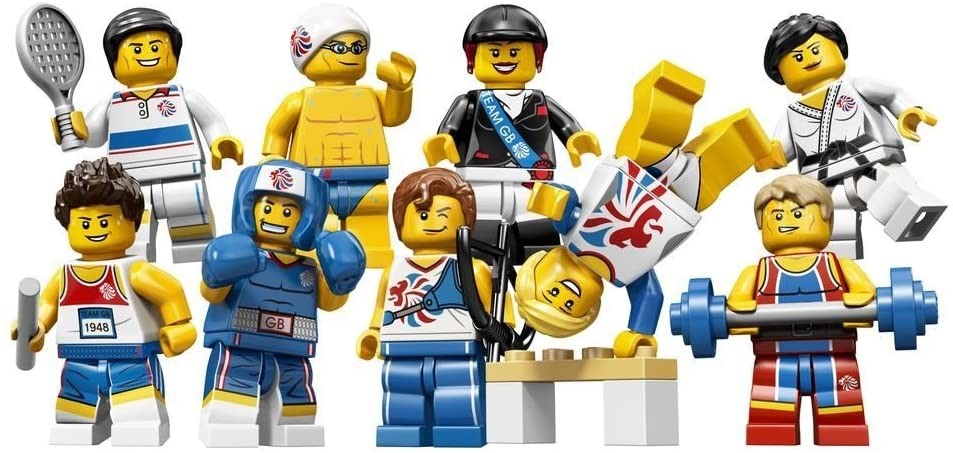
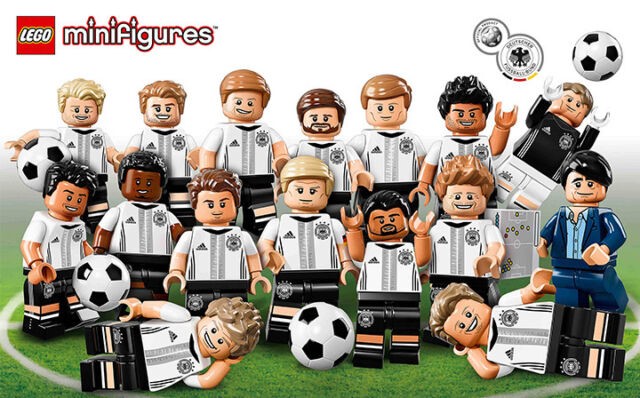
1 comment
Josephine
This is cool !!! Nice analysis… well I think the last Harry Potter CMF was a step closer to more equality… where series one was 16 male characters vs 6 female. The second one was 9 male characters vs 7 female… if only they had dropped one of the male for one more female it would have been 50/50.. now there were 2 more male ones compared. The HP advent calender in 2020 though had 4 female figures vs 2 male figures.